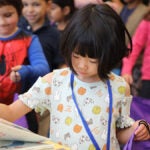Family Literacy Connectors
Summary: Family Literacy Connectors help schools build welcoming literacy environments for families, bridging instruction and practices between school and home
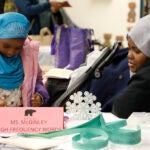
Putting the connect in Family Literacy Connector
Family Literacy Connectors at Bailey Gatzert Elementary and South Shore PreK-8
Events around early literacy help build a bridge between schools and families
At Bailey Gatzert Elementary, the school cafeteria is buzzing with activity. Joanne Griesemer has transformed the room into a makeshift library, with a variety of stations for preschoolers, kindergarteners, and first graders to practice reading.
Over at South Shore PreK-8, Dione Johnson has turned their rotunda into a dining room as African American and continental African families come together to share recipes for a Black Family Cookbook. Families were invited to write down recipes from their culture or bring a dish to share.
Though vastly different, both events were designed to help students to build their reading skills. These are two examples of how Family Literacy Connectors (FLCs) are helping schools build welcoming literacy environments for families by bridging instruction and practices between school and home.
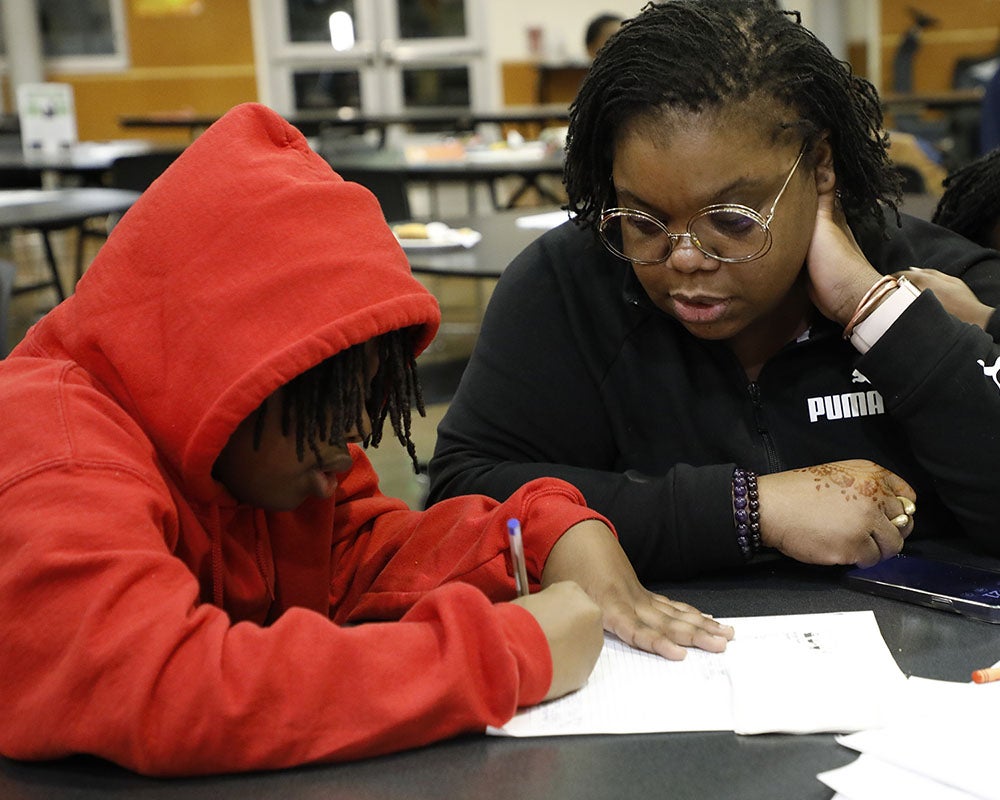
FLCs are school-based family engagement liaisons who help promote early literacy for Seattle Public Schools (SPS) students in kindergarten through third grade, especially those furthest from educational justice, beginning with African American boys.
“An early learning Family Literacy Connector works to advocate for families in a unique capacity,” said Griesemer. “You can often find us meeting with students in small groups to reinforce literacy skills, coordinating family events, reaching out and communicating with families … [or] creating new ideas to advocate for families.”
FLCs are part of the district’s five-year strategic plan to have students reading at grade level by the end of third grade, which is when students make the leap from learning to read to reading to learn. Reading well by third grade is a critical benchmark for students. If students are at or above grade level by third grade, they are more likely to be successful in other subject areas when they reach fourth grade.
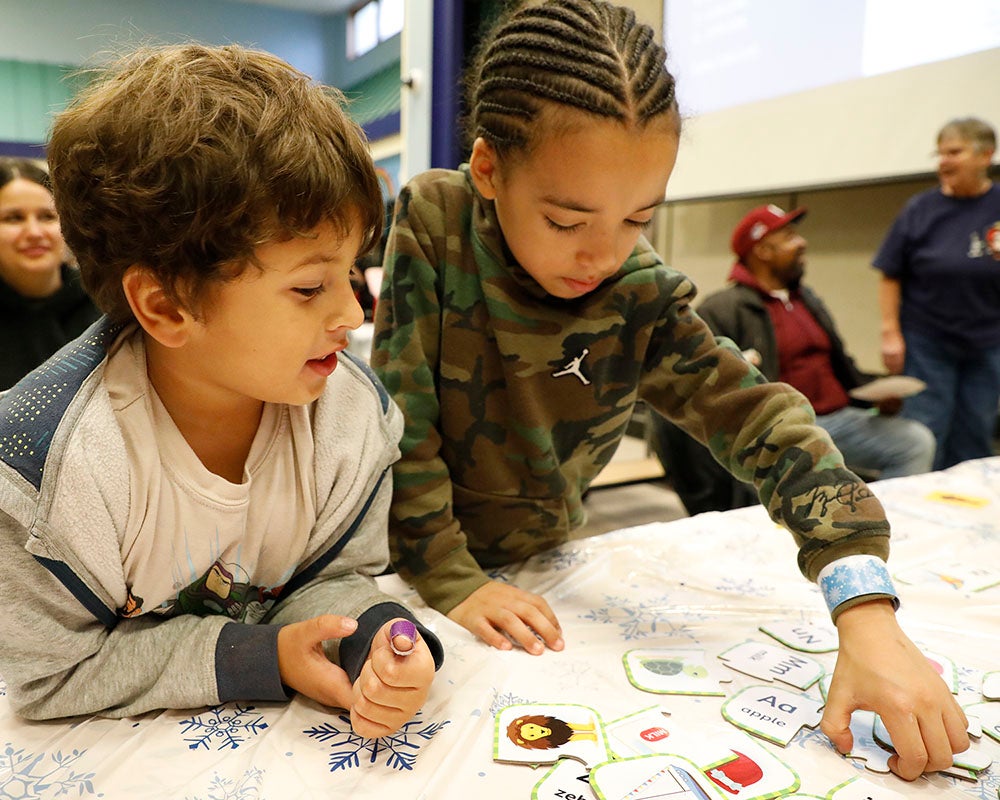
The district provides funding for its 13 Early Literacy Priority Schools to employ FLCs on an opt-in basis. Most were hired because of their existing connections with their schools’ parent and family communities. At Bailey Gatzert, Griesemer is a parent and volunteer. In her role as FLC, she knows how important it is for schools and families to join forces.
“When we meet, families really see how the Big Three – school, home, and community – work together to strengthen student learning by sharing strategies and tools,” Griesemer said. “During these events, families and staff can strengthen their partnership. When students see the adults in their lives working together on a common goal like literacy, they feel comfort knowing we’re rooting for them to be their best.”
Griesemer’s literacy event shared space with a few community partners. The Seattle Public Library hosted a reading room, and Communities of Rooted Brilliance had representatives on site to offer resources to families that may be new to the country.
All FLCs are responsible for hosting three literacy connector events throughout the school year. Johnson, the FLC at South Shore PreK-8, wanted to hold an event in which children were publishing. She believes publishing students’ work encourages readership.
“I wanted to focus my events on the time right before a school break, so students could have something that they produced to read during the break time to avoid reading lulls,” she said.
By having families share food from their culture, Johnson’s event demonstrated how important it is to connect with students beyond the classroom.
“Family Literacy Connectors are … the people who do cultural interpretation and academic interpretation so students can have the support they need in the home, and families can have the support they need, and it mirrors what’s happening in the building,” Johnson said.
Both Johnson and Griesemer feel strongly about their work as FLCs. Both women believe that making these connections will serve students in positive ways for years to come.
“I enjoy hearing about the diverse family experiences in school and how they can integrate their culture into family learning,” Griesemer said. “Putting the ‘connect’ in Family Connector is my favorite part!”
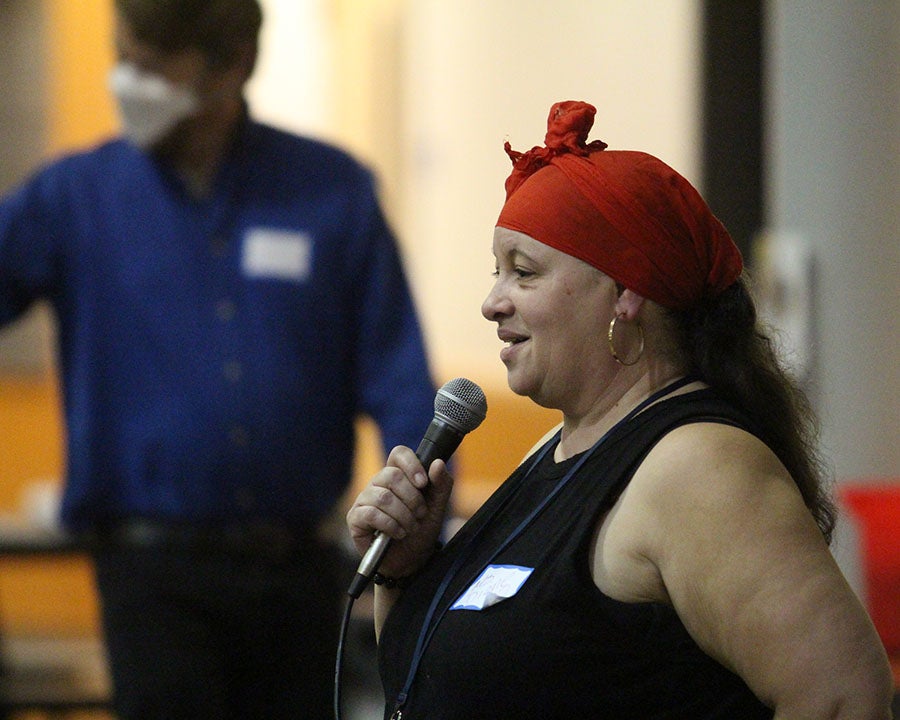
Family Literacy Connectors Bridge Reading Gap Between School and Home
Family Literacy Connectors at Thurgood Marshall and Leschi Elementary Schools
Posted: March 2, 2022
Trinia Washington knows Thurgood Marshall Elementary inside and out. Her kids attended the school, and she has volunteered in nearly every space in the building: classrooms, the library, the main office, and different committees.
Just a four-minute drive up the street, Nia Steward walks the halls of her bonus daughter’s school, Leschi Elementary, waving to students who call her name. She enters the library and makes suggestions to students looking for a new book to read. Their knowledge of the schools and their familiarity with staff and families make them the perfect people to be Family Literacy Connectors (FLC).
FLCs are school-based family engagement liaisons who are responsible for helping schools build welcoming literacy environments for families, bridging instruction and practices between school and home. The district employs 10 FLCs across 13 schools. Most were hired because of their existing connections with their schools’ parent and family communities. Washington got her start at Thurgood Marshall as a literacy tutor – work she did with kindergarten through second grade students for three years.
“Just knowing that I had been around the school [and was] familiar with the school opened up the opportunity to be considered for the Family Literacy Connector position,” Washington said.
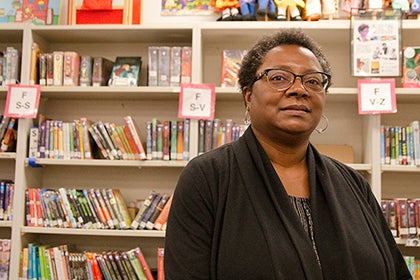
FLCs help promote early literacy for Seattle Public Schools (SPS) students, especially those furthest from educational justice, beginning with African American boys. They are part of the district’s five-year strategic plan to have students reading at grade level by the end of third grade. Reading well by third grade is a critical benchmark for students, and if students are at or above grade level by third grade, they are more likely to be successful in other subject areas.
Building Relationships
While part of Washington and Steward’s days are filled with helping students with their reading, the bulk of their time is spent calling families to check in on the progress kids are making at home. The task can be daunting when families are not receptive, but both women are persistent, making follow up phone calls in order to keep building relationships.
Once trust is established, Washington and Steward work to get books home to students. Through a Donors Choose fundraiser, Washington was able to secure enough funding for each student on her caseload to have a personal book to keep at home to read. Leschi has a funded book fair, and all the students on Steward’s caseload receive five books to build an at-home library. They encourage families to read with their children for 30 minutes a day.
“Some families may not have had a good experience with the school system. You’re trying to build relationships with parents so that they feel comfortable coming to you …” Washington said. “It takes time to build that relationship up, and it takes perseverance to continue to reach out.”
Good Vibes Only
While Steward’s caseload is primarily African American boys, she is making space for others. Her workspace is covered in books and literary posters highlighting Black role models, and she is starting a book club for Black girls. Growing up in a family that stressed the importance of reading, she tries to make sure Leschi students can find books that are relatable. Steward has a collection of African and African American literature that she built on her own.
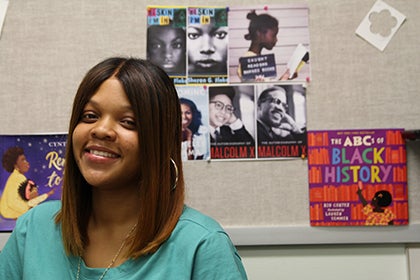
Although some students may read for entertainment, Steward wants to make sure students are still learning while they read. She encourages them to not get discouraged when they don’t know a word and supplies students with helpful documents that can be used to guide them as they read.
It may be hard to see growth during this time of COVID and extended school closures, but Steward makes sure to celebrate even the smallest increment of success. She drowns students with positive reinforcement and recognition.
“I feel like the more students know there’s [accolades], the more they strive for that,” Steward said. “That’s what the students are missing right now. They want to feel celebrated.”


